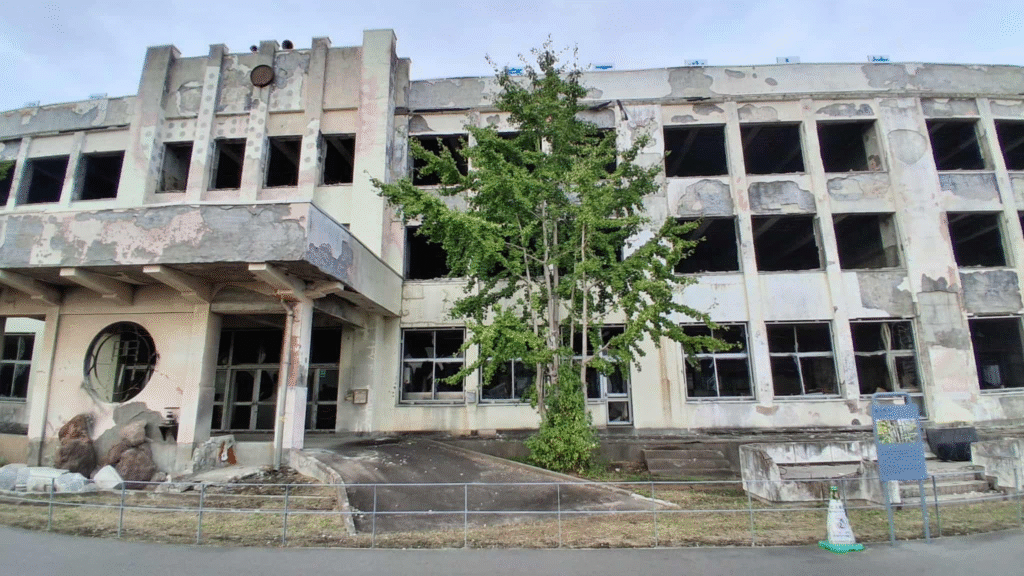Constructing heritage for future-making
Postat den 16th October, 2025, 06:04 av Cornelius Holtorf
On 11 March 2011, Eastern Japan was hit by a triple disaster caused by the combination of the impacts of an earthquake, tsunami and nuclear meltdown. Many people lost their lives, their homes, or their livelihoods, and are still affected by the aftermath now.

Figure 1: Central area of the Disaster Memorial Park under construction in Futaba, Fukushima
Over fourteen years later, the region most affected is now covered by a plethora of topical museums, exhibitions, memorial stones, and even some largescale memorial parks that either opened over the last few years or are still under construction. They all do not only aim at recalling what happened but also intend to create a better future.
Figure 2: 3.11 Densho Road connecting disaster memorial facilities in Eastern Japan
I first explored the topic on an exploratory trip to Fukushima Prefecture (with Tomas Nilsson and Tom Holtorf) in spring 2023. Now I was able to return for some days in connection with a NEA (OECD) conference on Nuclear Waste Management I participated in in Yokohama. I could even spend two days in Miyagi Prefecture this time. I am more than ever convinced that Eastern Japan provides a good case for studying the role of cultural heritage in negotiating the relations between present and future societies, i.e. what we call heritage futures.

Figure 3: Display in the Great East Japan Earthquake and Nuclear Disaster Memorial Museum in Futaba, Fukushima
I found evidence that remembering the 3.11-Disaster related present and future societies in at least the following interrelating but different ways:
1. Restoring and continuing after hiatus
- Restoring shrines and other cultural heritage to reconnect with the past for the future
- Passing down memories and lessons of the disaster to protect lives around the world in the future, e.g. building higher seawalls and promoting tsunami alert response (e.g. memorial facilities along 3.11 Densho Road)
- Expressing personal memories of the disaster to continue life
- Revitalizing the region by promoting and rebuilding economic development, e.g. through high-tech and tourism (e.g. Great East Japan Earthquake and Nuclear Disaster Memorial Museum in Futaba)
2. Making up for past failure
- Accepting apologies and accountability that come with the responsibility to make up for the damage (Tepco)
- Honouring the victims forever (memorial stones)
3. Finding a better way forward
- Increasing resilience by improving the human ability to embrace loss, change, transformation, adaptation and renewal in the future (e.g. inspired by Sakura, the reoccurring cherry blossoming)
- Learning from the mistakes of modernity and capitalism to create a more sustainable society for the future.
4. Restarting and regenerating life
- Partial forgetting of the disaster in order to move on with new life (e.g. resprouting of burned trees, see Figure 4)
- International support and joint remembering as an opportunity for connecting people around the world (Ishinomaki City Kadonowaki Elementary School exhibit)
- Recovering from the disaster to regenerate our lives for the future refocusing human priorities (e.g. some eye-witness storytelling).

Figure 4: a tree outside Ishinomaki City Kadonowaki Elementary School burned by the disaster in 2011 but now resprouting with new life
In sum, preliminary outcomes of my fieldwork reveal how past, present, and future can be strongly interconnected: the way we tell the past in the present strongly correlates with our assumptions and anticipations of the future. This becomes particularly pertinent in the case of the 3.11.-Disaster which brought about extensive losses of lives and livelihoods, including entire town areas and much essential infrastructure.
The future we are building today in the aftermath of the disaster depends on how we describe and remember what actually happened, e.g. by constructing cultural heritage sites, as currently happens in the area affected by the 3.11 disaster along the Japanese East Coast. There are different ways of recalling the disaster and different futures following on from that. That is why cultural heritage is of great importance in future-making, and why heritage futures matter in the present.
Det här inlägget postades den October 16th, 2025, 06:04 och fylls under blogg

